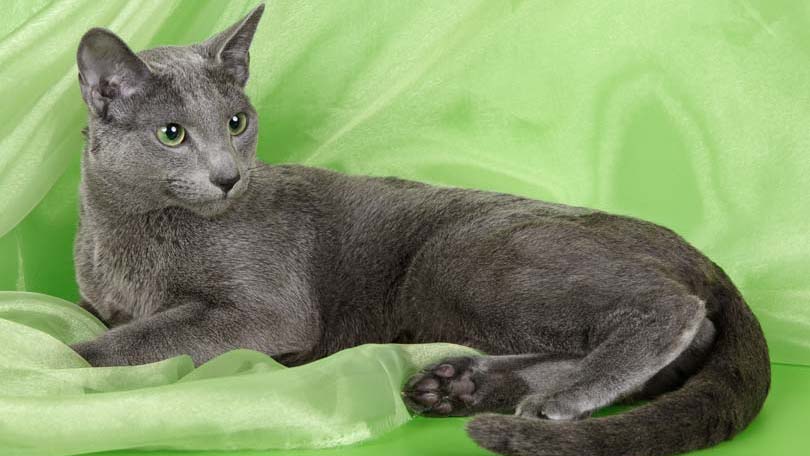
Kidney problems in cats are one of the most common health problems that can affect cats. While kidney (renal) problems and failure are one of the leading causes of death in cats, early detection and management can help to allow cats with this problem to live many years past their initial diagnosis.
The kidneys are one of the body’s most vital organs. Cats have two kidneys, and they are responsible for constantly filtering the blood, separating waste products out of the blood stream and expelling them via the urine. This keeps unwanted waste products from becoming clogged in the other organs, and preventing the other organs from functioning efficiently. The job of the kidneys is essential to life, and is a constant process in the body.
Many factors, or a combination of factors can cause parts of the kidneys to stop functioning efficiently, diet, genetic predisposition, injury and old age are all common causes of kidney failure. As kidney function decreases, waste products begin to accumulate in the cat, causing a myriad of symptoms including weight loss, decreased appetitive, depression, increased thirst and urination and severe dehydration.
There are two types of kidney failure – chronic and acute. Acute kidney failure in cats most often occurs secondary to some type of major injury or illness that inflicts a great strain or stress to the kidneys. In response, the kidneys may wholly cease to function virtually at once, leading the body’s filtration system totally off-line. Acute kidney failure can be seen as a result of cats ingesting toxins or other substances that are nephro-toxic, or toxic to the kidney. Exposure to even a very small amount of some substances (such as Ibuprophen, ingesting lilies or antifreeze) can cause acute kidney failure in cats and is a immediate and life-threatening emergency. Treating acute kidney failure is dependent on what the cause of the kidney’s shutdown was, the ability to remove the cause from the cats body, and the amount of damage that was done to the kidneys. In some cases, dialysis may be required to artificially filter toxins from the blood for a period of days or weeks while the kidneys are given a chance to recover and see if they can resume functioning again. Chronic kidney problems in cats are far more common, and a high percentage of cats over the age of 12 have some degree of chronic kidney failure. As the term “chronic” suggests, this disease process is not sudden, but is rather present in a cat for an extended period. Many cats with chronic kidney failure fail to show any strong clinical signs until they have had this problem for many months or even years. In these cases, the most common cause of chronic kidney failure is simply related to age- as the body ages, so do the kidneys, and eventually they can wear out completely.
Recently, studies have also begun to show that diet can have a significant impact in preventing kidney failure in cats. By nature, cats are carnivores, and their systems evolved to eat meat in order to survive. In the wild, cats eat virtually the entire content of their caught prey. Their protein comes from the bulk of the animal that was killed, and virtually their entire water intake comes directly from the kill as well. Because historically cats evolved from the desert, where there was very little actual water to drink, they had to rely on their prey as a primary source of water.
A cats diet naturally would contain 65% water, and that high level of water helps the kidneys to filter more efficiently and easily. However, domesticated cats are often fed dry food with virtually a negligible water content. In order to make up for this dry daily meal, cats must drink supplemental water. Sadly, in many cases cats do not drink enough water, which causes chronic dehydration, and makes the kidneys work harder to filter the blood, which can eventually cause them to wear out before the rest of the cat.
While there are no ways to prevent a cat from developing kidney failure down the road, one way to help lessen the chances of kidney problems is to offer cats a diet with a higher moisture content, such as in the form of canned food versus dry. In addition, finding ways to encourage your cat to drink water (ie water fountains) is also beneficial to help counteract the struggle between your cats heritage and the modern way of feeding cats.
Identifying kidney failure in it’s early stages is often very difficult. A resilient organ, the kidneys can continue to at almost normal levels until at least 70% of their function has been lost. For that reason, often by the time symptoms of kidney disease appear in your cat, they have already progressed to severe kidney failure. As your cat ages, routine veterinary examinations, blood work and urine analysis to assess the kidney and other major organ function can detect kidney disease before severe damage is done.
The main ways of identifying and grading the level of kidney failure are by two blood tests and a urine test. By measuring the level of two waste products in the blood, the blood urea nitrogen (BUN) and blood creatinine. These two tests are useful in reflecting the current state of the kidney function, they are less helpful in trying to determine if the problem is acute or chronic, or to detect early kidney failure. For this, a urinalysis is also needed.
When the kidneys filtration process becomes adversely effective, the body attempts to adapt by increasing blood flow to the kidneys, thus creating more urine. To prevent dehydration due to increased urine output, the cat they drinks more water. This is reflected in urinalysis as a drop in the “concentration” or amount of waste products in the urine. As the kidney functions decrease, and the concentration of the urine drops.
If it is determined your cat is suffering from kidney failure, there are several common changes that can be made to help ease the workload of the kideys and support kidney function. Diet changes may be prescribed to reduce the level of protein the diet, a stressor of the kidneys, and wet food may be recommended over dry. Fluid therapy, administered at home daily under the skin is also an excellent way to help ease the burden on the kidneys, and increases their function.
With early diagnosis and treatment, many kidney problems in cats can be managed for months or even years. The most important part of diagnosing and treating kidney issues is to work closely with your veterinarian to determine the best types of treatments and actions for your cat.





